Today, I reviewed same Android code, and found a strange phenomenon.
It is the anonymous internal class directly called the external class instance method.
In my mind, directly calling a method is equivalent to adding this directly before the method, and this is an instance of an inner class.
According to this logic, an instance of an external class is invoked directly in the anonymous inner class, that will caused the compile ERROR.
But actually compile this application, and no problem. And the running log is normal.
Therefore, writing a simple Demo to verify the previous concept is wrong. code show as below:
public class InnerClass {
public static void main(String[] args) {
new InnerClass().process();
}
public void process() {
new Thread() {
@Override
public void run() {
System.out.println(toString("test"));
}
}.start();
}
public String toString(String string) {
return string;
}
}
So, What is the difference of the anonymous internal class directly call the external class instance method in the OpenJDK and Oracle?
Where can I find documentation to see these differences?
I worked hard, but did not get a clear answer.
Thanks.
P.S.
In According to my point of view
public class InnerClass {
public static void main(String[] args) {
new InnerClass().process();
}
public void process() {
new Thread() {
@Override
public void run() {
// In According to my point of view
// toString("test")
// <==>
// this.toString("test")
// and `this` is the instance of Thread
// what's the error of my view?
System.out.println(toString("test"));
}
}.start();
}
public String toString(String string) {
return string;
}
}


